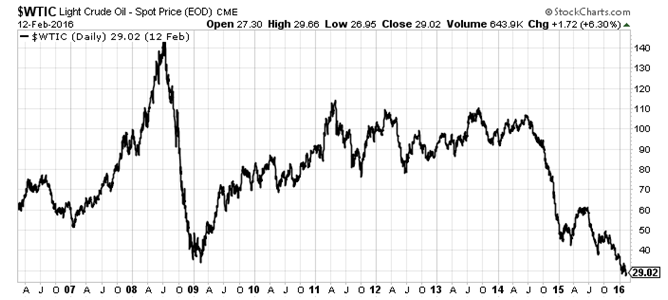Political action can be a useful contrary market indicator. When a politician or some government operative goes on the offensive, it frequently coincides with either the apex or nadir of popularity and price.
For example, Department of Justice operatives went on the offensive against International Business Machines (NYSE: IBM) in 1972, charging the company with antitrust violations. The early ’70s was the apex of IBM’s market power. The tide soon turned. Competition, not government diktat, began to erode IBM’s market power just when the Justice Department was focusing IBM in its cross hairs.
[ad#Google Adsense 336×280-IA]Competition would eventually reduce Big Blue to the also-ran we know today.
The Justice Department launched a similar offensive against Microsoft (NASDAQ: MSFT) in the late 1990s.
As timing would have it, Microsoft was at the apex of its market power.
Like with IBM, the market, not the Justice Department, repealed Microsoft’s putatively unstoppable dominance.
The Department of Justice inadvertently called a top on both IBM and Microsoft.
 More recently, in early 2011, Congress members from both parties urged President Obama to deploy Strategic Petroleum Reserves in order to combat rising oil prices.
More recently, in early 2011, Congress members from both parties urged President Obama to deploy Strategic Petroleum Reserves in order to combat rising oil prices.
The urging reached full crescendo in the spring of 2011. As so frequently happens, the crescendo coincided with a market high, with oil peaking at $112 a barrel. Oil prices soon drifted lower. In mid-2014, prices tumbled off a cliff. They’ve been tumbling around the bottom ever since.
They might not be tumbling much longer, though. Earlier this month, President Obama proposed a $10 per barrel oil tax. He floated the idea because oil prices – and more important gasoline prices – are low. To quote the president, “They (oil and gasoline prices) are expected to be low for a while, for the foreseeable future.”
Not long after uttering this prophesy, oil prices rallied 8%. Now, this week rumors abound that Russia and OPEC will soon meet in Qatar to consider cutting oil production. Though a coordinated reduction is unlikely, we know that the pressure to reduce oil output is rising. The “foreseeable future” might be less foreseeable than the president expects.
Timing, as they say, is everything, and government has a lousy track record at timing. Yes, the sound bites feature hope, change and progressiveness, but everything about government is backward looking. Politicians and government officials are always chasing the last “crisis.” It’s all they know, because it’s all they can control.
It’s a fool’s errand in the end. What in the graph below would make anyone think that the oil prices that prevail today will prevail in the foreseeable future? Nothing.
 If the goal is to buy low in order to eventually sell high, oil should be on the radar. Oil and many oil-related investments are priced low.
If the goal is to buy low in order to eventually sell high, oil should be on the radar. Oil and many oil-related investments are priced low.
What if you want to buy low, but have a low risk tolerance? Then go big.
Few oil companies are bigger than Royal Dutch Shell (NYSE: RDS-A) and BP PLC (NYSE: BP). What’s more, few offer bigger dividend yields. Shell shares yield 8.3%; BP shares yield 8.2%. Both Shell and BP are down 30% over the past year. Both are priced for a dividend cut. Nevertheless, both continue to pay their respective dividend. Just as important, both companies have also reaffirmed their commitment to their respective dividend.
(For safe, growing dividends you can always count on no matter what the economy does, click here.)
If you’re willing to venture out on the risk curve, consider beaten-down drillers. Halliburton (NYSE: HAL) offers drilling services to upstream oil and natural gas producers. These producers have been beaten to a pulp.
Halliburton has taken a few hits of its own. Its shares traded at $70 each 18 months ago. Today, they trade at $30. That said, Halliburton is best of breed among its competitors. It continues to maintain and pay its dividend, which currently yields 2.4%.
If you want to venture even further out on the risk curve, consider an offshore driller. Most are down 70% or more over the past five years. They’re priced for the worst, but the worst is over if the bottom in oil has indeed passed.
No offshore driller is better run than Diamond Offshore Drilling (NYSE: DO), which yields 3%. Diamond has been through these punishing lows before. Because of financial discipline, it frequently prospers in the next up cycle by picking up additional rigs on the cheap from its improvident competitors.
Now that the president has inadvertently declared an oil price bottom, I think it’s time to act on oil investments.
— Stephen Mauzy
[ad#wyatt-income]
Source: Wyatt Investment Research
